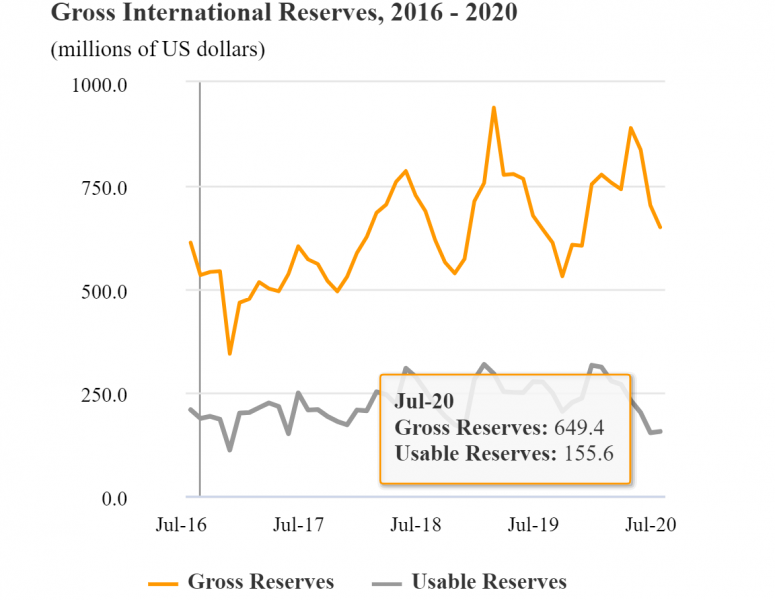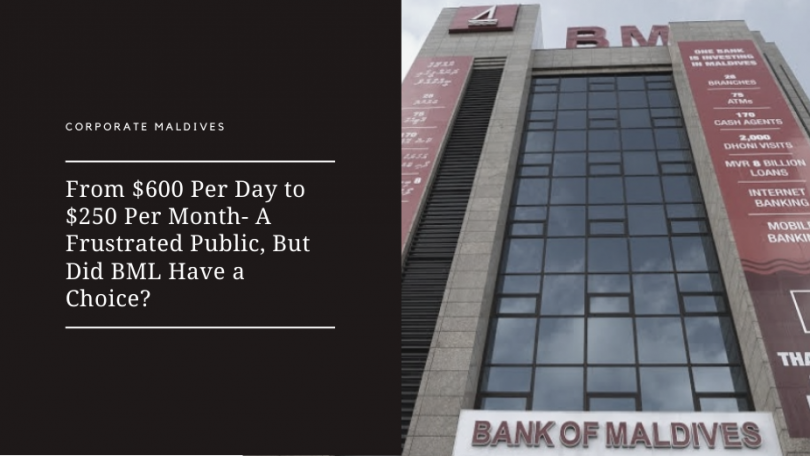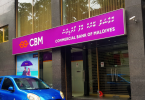The USD limit, which used to be USD 600 per day for POS and USD 400 per day for ATM withdrawals for Visa debit cards, has been lowered by Bank of Maldives (BML) to USD 250 per month, per card for debit and credit cards for use on foreign transactions. This is a huge change and the announcement caused great resentment in the public. But did the Bank really have a choice?
The statement by BML released yesterday stated that “Bank of Maldives has been compelled to take difficult but necessary steps to sustain its dollar outflow and prioritize funds for TTs for essential imports as well as overseas medical and education payments.” However, the Bank will support all medical and education payments through cards with temporary changes to the limits.
BML also stated that the change will not impact 95% of the Bank’s customers; and is a temporary measure taken to manage within the current environment, which will be reversed when the situation allows.

The Maldives tourism industry faced the biggest downturn in its history due to the pandemic, which resulted in a 3-months halt in tourist arrivals. This stooped the inflow of foreign currency into the country. Tourism Industry is the biggest GDP contributor to the Maldives and was the main source of income for BML as well.
According to a finance professional, BML cannot do anything if they do not have USD. “They can’t buy from the black market to pay foreign companies. If the central bank does not have a strong reserve position but still try to hold on to a fixed exchange regime, there is nothing banks can do.”
Regardless, a vast majority of the public seems to be detesting BML for the significant drop from USD 600 to USD 250, saying that the limit is too low and that many people have been ordering products from online during these days. A statement by an industry professional read that this temporary step had to be taken as many people started using the card for trading dollars in the black market.
Further, Ismail Zaiyand, former Director of Internal Audit & Investigations at Ministry of Finance says that everyone knows that the Maldives income is 85% from the tourism industry and if tourist arrivals decrease, a USD shortage will come up. He questions whether it would not be important to control USD for essential uses during a time like this.

However, this is not the first time the Maldives faces such restrictions. During 2012-2016, statistics show that the Maldives faced a shortage of dollars in the market and similar limitations were brought. In 2018, BML announced that the customers will be able to withdraw up to USD 1,600 and deposit up to USD 3,200 per day from ATMs as the usable reserves peaked during that year.
As of July 2020, MMA usable reserve stands at $155.64 million. The MMA is responsible for maintaining the foreign exchange (International) reserves at a level that is conducive to exchange rate stability. Managing foreign exchange reserves is one of the key functions of the MMA that supports the policies for monetary and exchange rate management.
So the change is huge, the adjustment public needs to do is huge- but the dollar shortage of the Bank is high as well. Perhaps this could have been avoidable if there was better planning earlier.
Full details are available at the link below:







